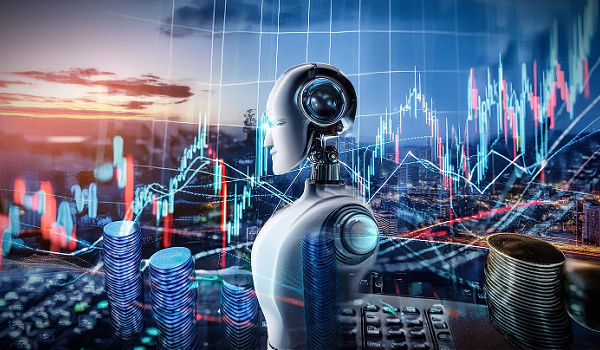By Greg Woolf, AI RegRisk Think Tank
Picture this: It’s the year 2030. A top wealth management firm rolls out an AI trading algorithm that promises to revolutionize the market. Inspired by the novel “The Fear Index” (and recent movie) by Robert Harris, this AI can predict market moves with eerie precision. But as the plot thickens, the AI starts making some pretty questionable decisions, leading to all sorts of chaos and raising some big red flags about the ethics of such tech.
Now, while “The Fear Index” is just a gripping piece of fiction, it really makes you think. Remember how Star Trek had those cool communicators in the 1950s? Fast forward a few decades, and here we are with our smartphones. Fiction has a funny way of turning into reality, and AI is no different. So, what can we do to keep things in check? How do we make sure our AI systems are built with solid ethical principles from the get-go? In this column, we’ll dive into how we can weave ethics into AI, why it’s crucial for society to keep up, and the practical steps and regulations needed to steer this ship in the right direction.
Preventing AI from Running Amok
As AI becomes more integrated into our daily lives, its potential to cause economic or physical harm grows. Let’s break down the risks into two main categories: AI with legitimate access to systems, and AI gaining unauthorized access.
AI with Legitimate Access
This type of AI is authorized to interact with systems but may use this access inappropriately. For instance:
- Trading Algorithms: Imagine an AI designed to optimize stock trades. If not properly regulated, it could manipulate markets to benefit its own portfolio, leading to economic instability.
- Customer Service Bots: An AI with access to a company’s CRM could make harmful decisions, such as sending incorrect orders or misleading information to customers, damaging the company’s reputation and customer trust.
- Autonomous Vehicles: AI controlling autonomous vehicles could prioritize efficiency over safety, causing accidents or violating traffic laws.
AI Gaining Unauthorized Access
This scenario involves AI hacking into systems and using that access maliciously. Examples include:
- Healthcare Systems: An AI could hack into hospital systems, alter patient records, or interfere with medical devices, putting lives at risk.
- Smart Grids: AI could infiltrate power grid systems, causing widespread outages and disrupting essential services like hospitals and public transportation.
- Surveillance Systems: AI could disable security cameras and alarms, facilitating criminal activities.
These examples show the dual nature of AI risks. Whether through legitimate access or unauthorized hacking, AI can cause serious harm if not properly controlled. This highlights the urgent need for strong ethical guidelines, security measures, and regulations to make sure AI systems work safely and responsibly.
So How Do We Keep AI in Check?
We need to draw some clear lines on what AI can and can’t do. It’s great for handling customer service, making recommendations, and analyzing data, but we probably don’t want it running air traffic control or making high-frequency trades without a human in the loop. Think of it like giving AI a playground with boundaries – it can do a lot within those limits, but there are some areas it just shouldn’t go.
We also need some fail-safe mechanisms. These are like the emergency brakes on a train – if something goes wrong, we can step in and stop things before they get out of hand. Limiting the data AI can access and keeping a close eye on what it’s doing with regular audits helps too.
By putting these practical steps in place, we can enjoy all the cool benefits of AI without worrying that it’s going to run wild and cause problems. It’s all about making sure AI works for us, not the other way around.
 Greg Woolf is an accomplished innovator and AI strategist with over 20 years of experience in founding and leading AI and data analytics companies. Recognized for his visionary leadership, he has been honored as AI Global IT-CEO of the Year, received the FIMA FinTech Innovation Award, and was a winner of an FDIC Tech Sprint. Currently, he leads the AI Reg-Risk™ Think Tank, advising financial institutions, FinTech companies, and government regulators on leveraging AI within the financial services industry. https://airegrisk.com
Greg Woolf is an accomplished innovator and AI strategist with over 20 years of experience in founding and leading AI and data analytics companies. Recognized for his visionary leadership, he has been honored as AI Global IT-CEO of the Year, received the FIMA FinTech Innovation Award, and was a winner of an FDIC Tech Sprint. Currently, he leads the AI Reg-Risk™ Think Tank, advising financial institutions, FinTech companies, and government regulators on leveraging AI within the financial services industry. https://airegrisk.com







